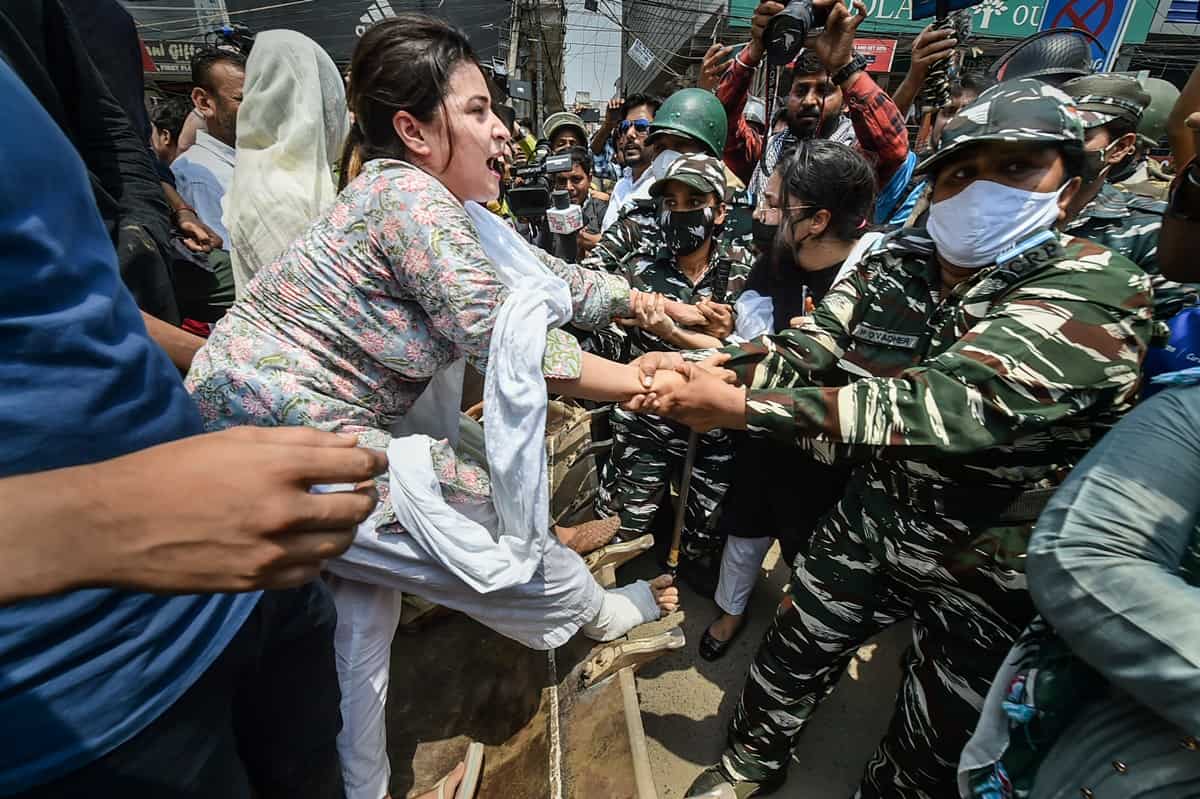
By Shayan Bisney
Hyderabad: The Bench of Justices B. R. Gavai and K.V. Viswanathan of the Supreme Court of India came down heavily on the Executive on Tuesday with its order in Jamiat Ulama I Hind v North Delhi Municipal Corporation [WP (C) 295 of 2022].
The Supreme Court while pronouncing their order stated that the executive cannot be the judge and such decisions could not be taken by them without following any due process of law. The court also stated in its order that “till the next hearing date, we direct that there shall be no demolition anywhere across the country without seeking leave of this Court.”
The direction of the court to take leave of the Supreme Court of India against any demolition across the country shows that the court has taken direct and full cognizance of the matter, treating it with utmost priority. This should deter state governments across the country from taking any action without following the due process of law and acting in a high-handed and arbitrary manner.
The Supreme Court went on to clarify that their order “would not be applicable if there is an
unauthorized structure in any public place such as road, street, footpath, abutting railway line or
any river body or water bodies and also to cases where there is an order for demolition made by
a Court of law.”
This order is a welcome step towards a sort of ‘bulldozer justice’ that has become rampant in the past few years. The government of a state, without following any due procedure established by
law, would demolish the house of an alleged accused.
This has become a form of fast-track punishment of the alleged accused and would set a disturbing trend for others to follow. Justice Viswanathan, while delivering the order also said that “even if there is one instance of illegal demolition, it is against the ethos of Constitution”.
A state government of a particular political party started with this bulldozer raj in their state which was later emulated by other state governments, mainly of the same political party as a form of quick justice by the executive without going through due process of law showing their seriousness in punishing the alleged accused.
The state governments thought that this would not only send a strong signal to the alleged accused but also show that theeExecutive was very serious about punishing the alleged accused and wanted speedy justice at the earliest. This was not only a shocking way for the Executive to act but also done without any regard to the due process of law.
It was important to note that most of these illegal bulldozer actions were done after any communal tension in states and most of the targets of such actions belonged to one particular community. The government of the day would do so without issuing any notice to the alleged accused and would come the next day with big bulldozers and cranes to demolish houses.
This not only displaced the alleged accused but also displaced the entire family of the person residing in the same house. Two petitions were filed in the Supreme Court of bulldozer action against a crime by a tenant’s son. One would wonder why the house of the landlord would be demolished against the acts of his tenant’s son.
All this is against the basic principles of law and criminal justice. The view of the state government would be that the structure was illegal and done without following the state guidelines and rules of the local
municipal and state bodies. The structure very well might be illegal but such action, without following any due process of law seemed to bring out a vindictive side of the state executive.
For an alleged accused not going through trial and being found guilty for his offence but his house where he resided along with his family being demolished was something unheard of and marred by red flags in multiple avenues.
The Supreme Court while pronouncing their order categorically mentioned that heavens would not fall if any structure was not demolished until the next date of hearing of the matter. The stern approach of the Court has set the tone against these illegal demolitions. The Court must in the following hearings set the ball straight about this and should come as a warning to state governments regarding such actions.
In my home state of Telangana, the current chief minister has set up a new statutory body called Hyderabad Disaster Response and Asset Monitoring and Protection Agency or HYDRA to tackle illegal encroachments in the state, especially near water bodies that have diverted the stream of the water or have run them dry with their illegal structures.
This has shaken the people of the state to a large extent. What one needs to understand is that if such action intends to eventually remove illegal structures, especially near water bodies, one needs to establish a due process to follow the same and not do it in a high-handed and arbitrary manner. This would not only be a boost to the natural habitat of the state but the present dispensation would also be able to do it with the confidence of their voters.
The current working of this body has attracted major controversy in the state but since the main
objective of this body is to remove illegal encroachments near water bodies, the order of the Supreme Court would not apply to them.
With this order of the Supreme Court, state governments must proceed with caution about their actions and most importantly their intentions to target and demolish any structure without following any due process of law. The court has taken up this matter of utmost public urgency and given timely relief to the party suffering from these actions.
The author is an advocate based in Hyderabad. The views and opinions expressed in this article are do not reflect the views of the publication.



